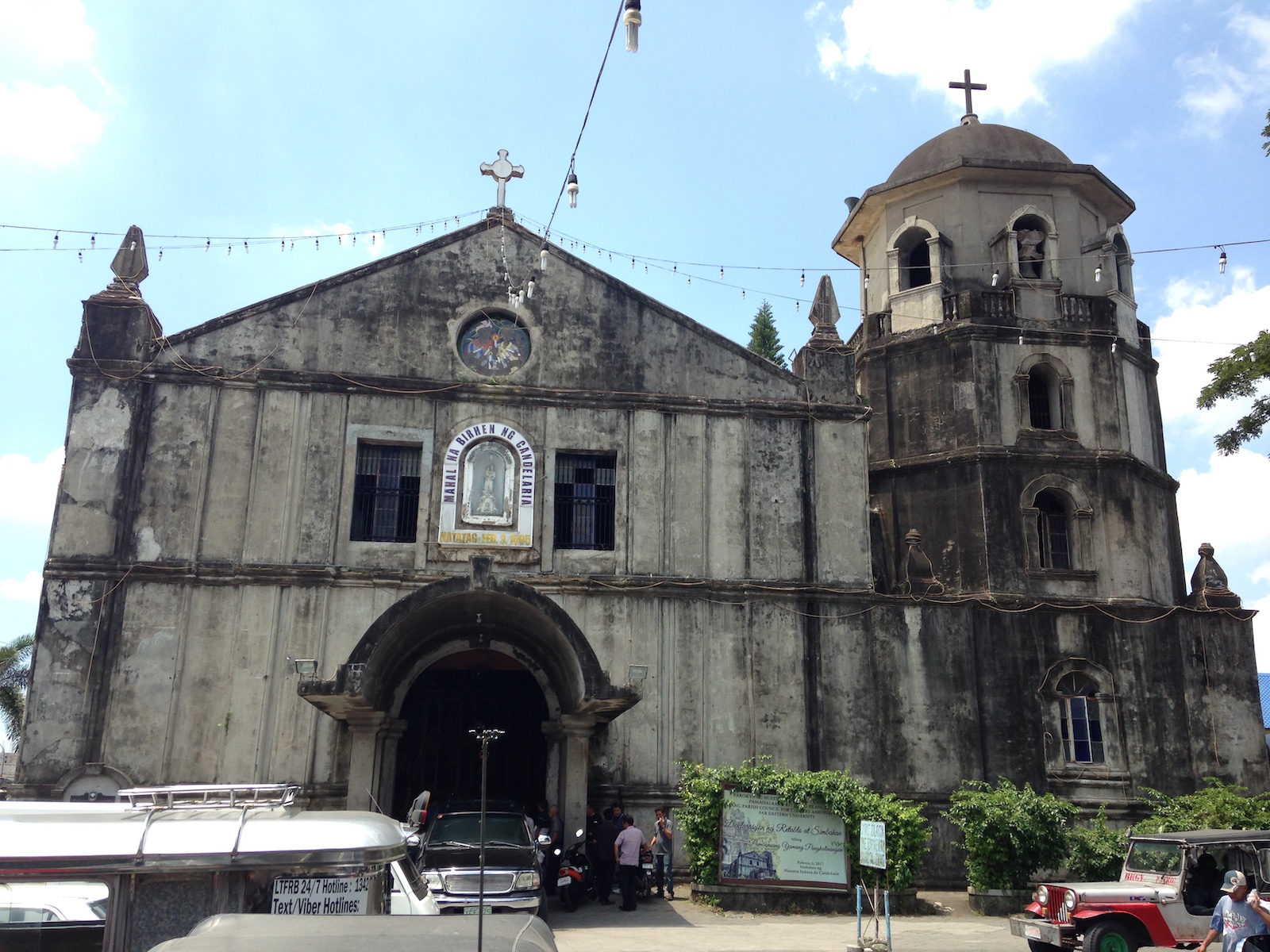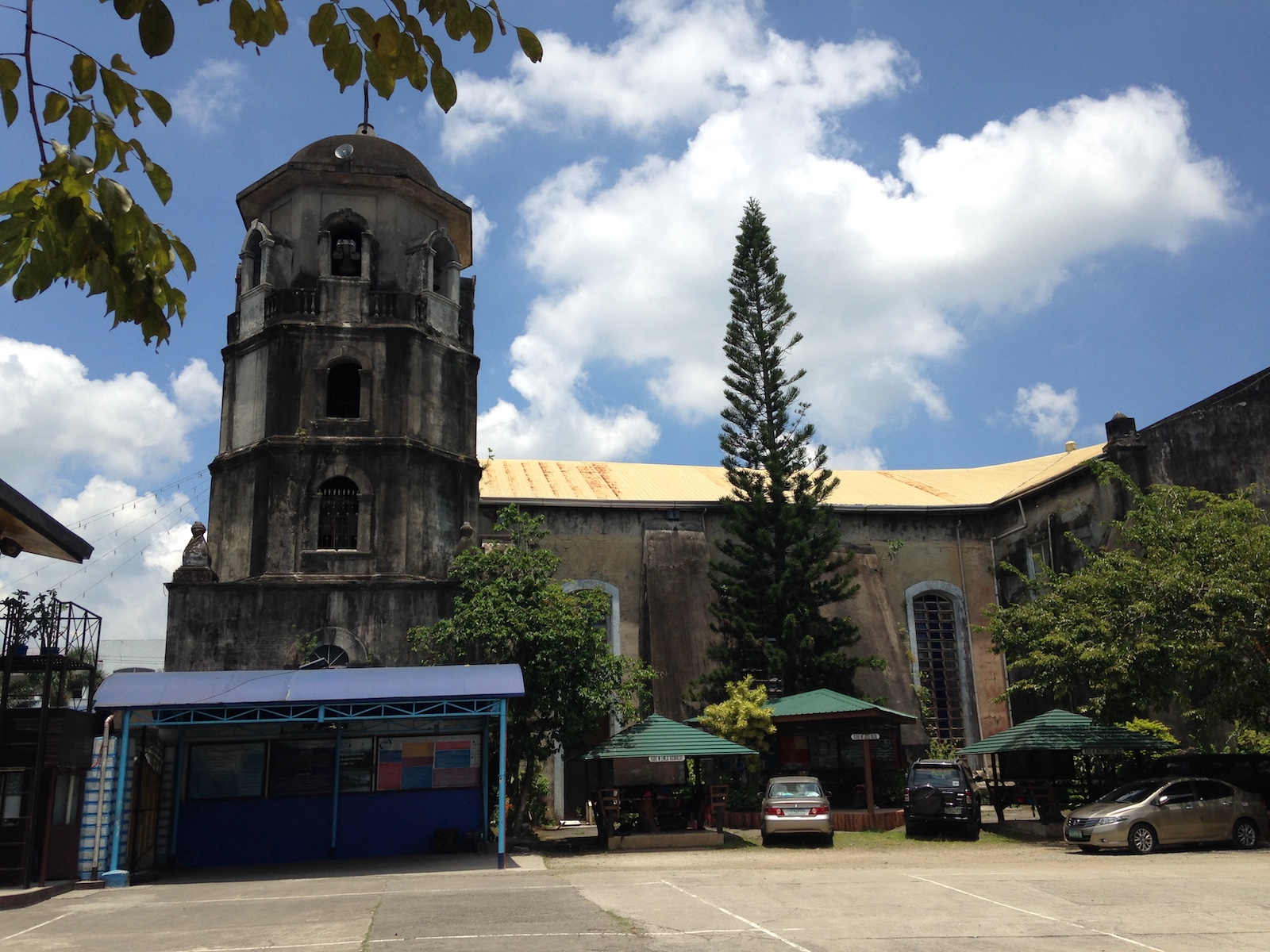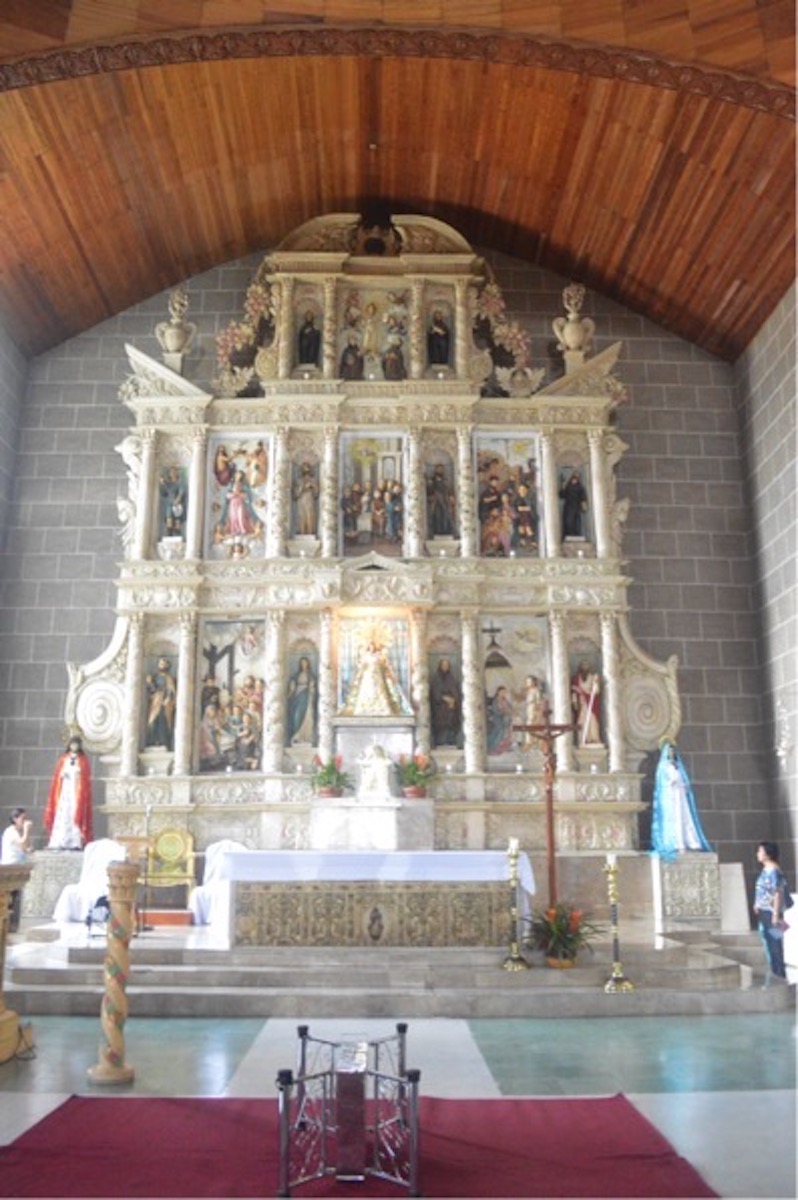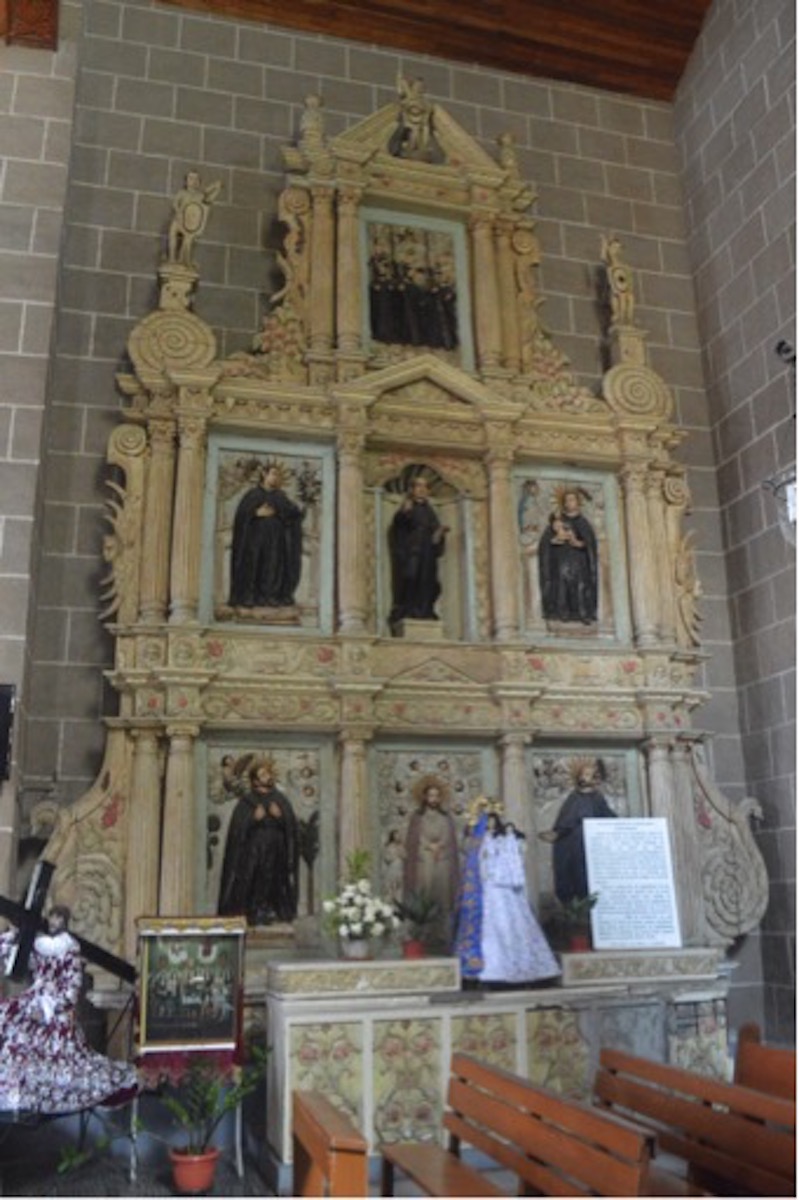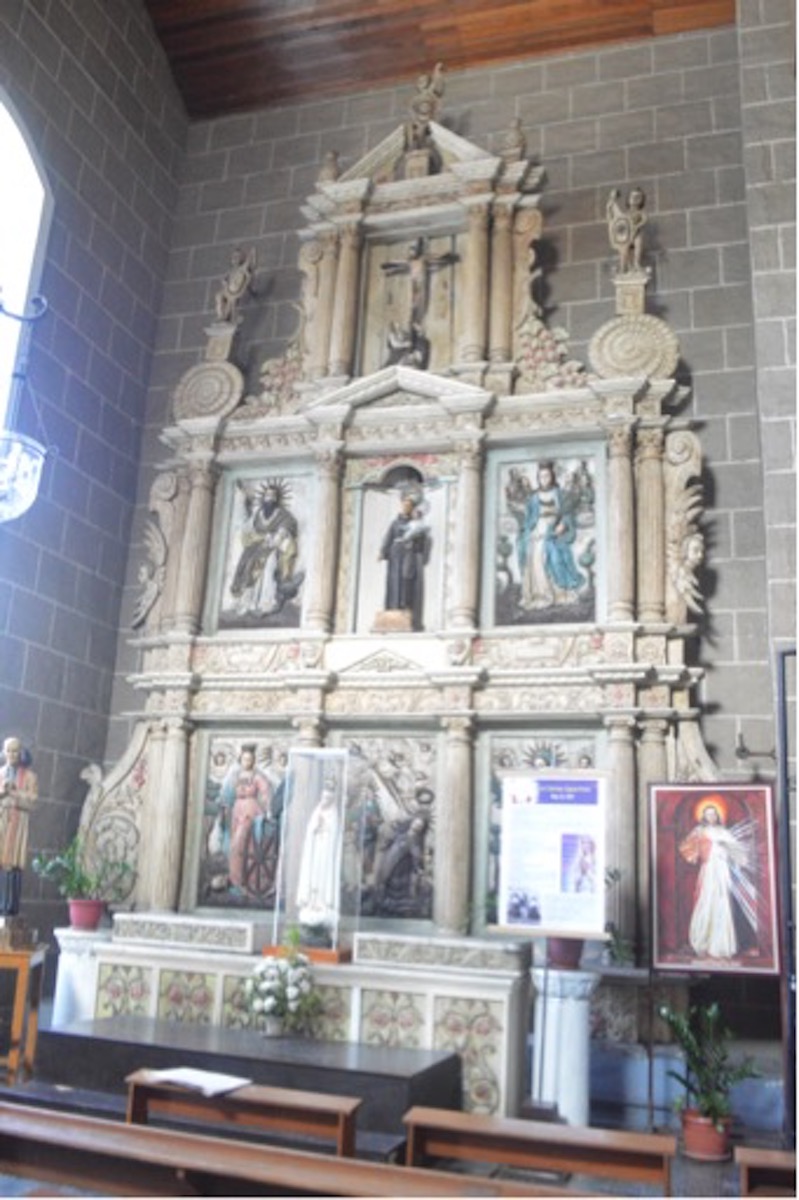A Gunner’s Rule | San Diego
A Gunner’s Rule | San Diego
-
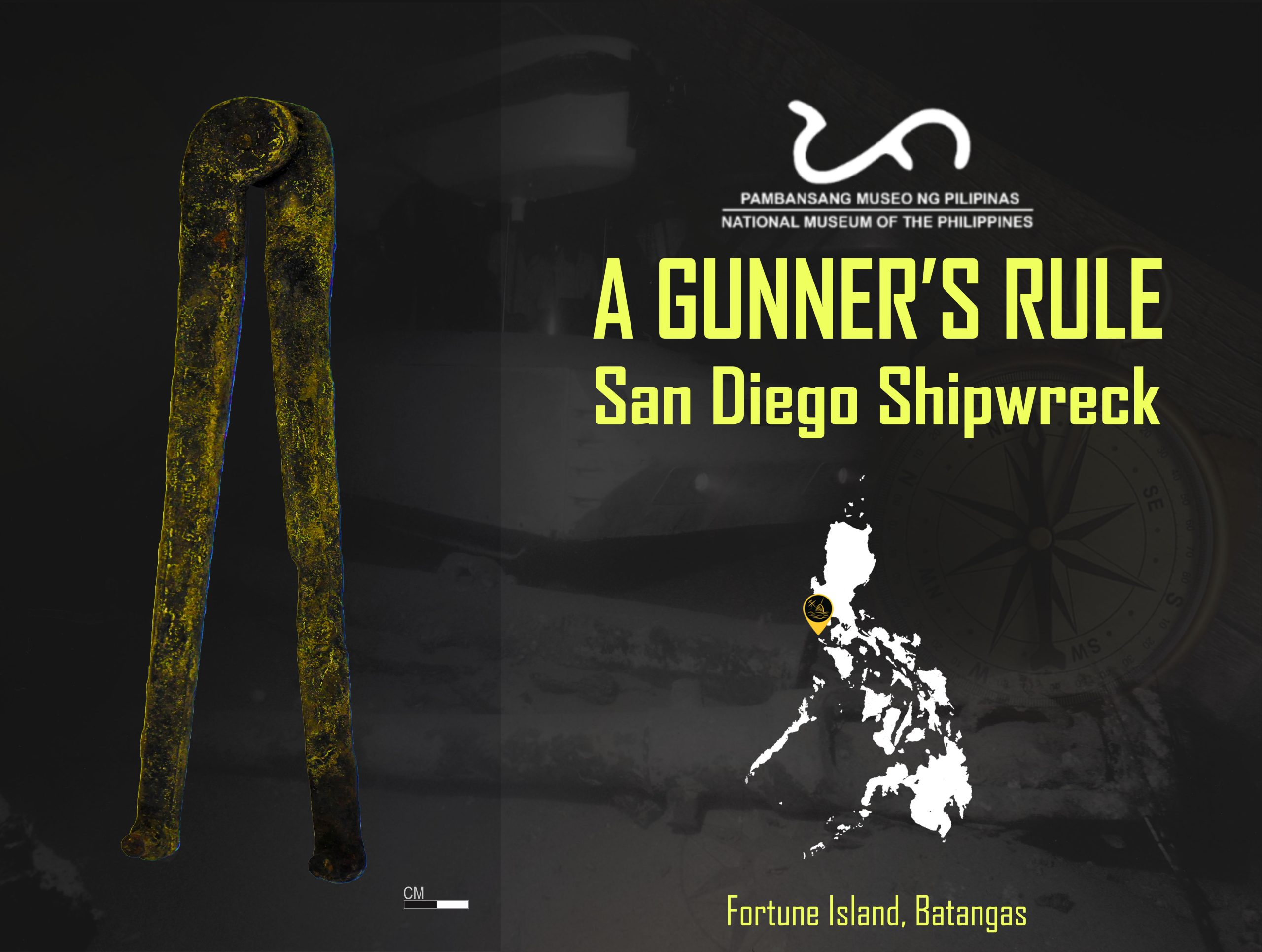
© NMP-MUCHD 2021, Poster and background image source: Desroches et al. (1996).
-
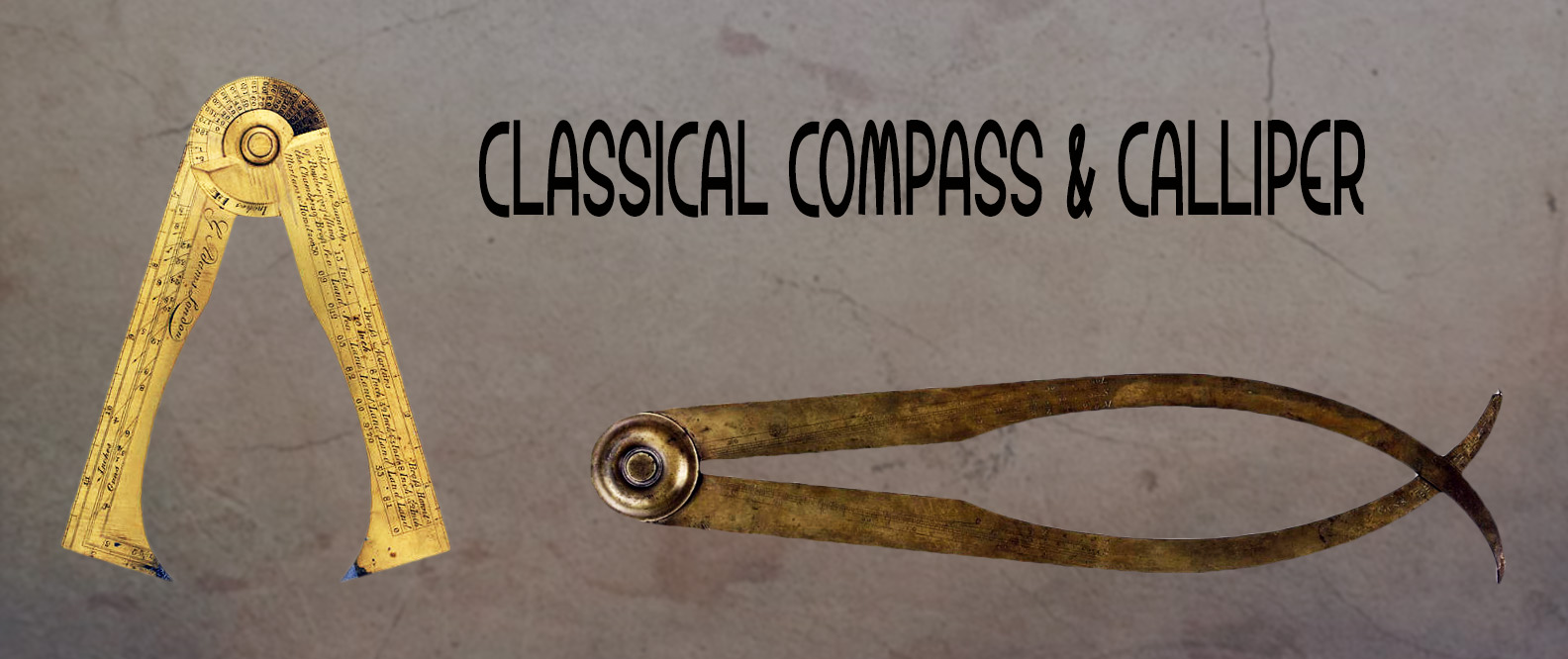
Ancient compass and caliper used to measure the diameters of ammunitions and or cannon calibers. Image Source: https://bit.ly/3lGDtcq. © The Board of Trustees of the Science Museum.
-
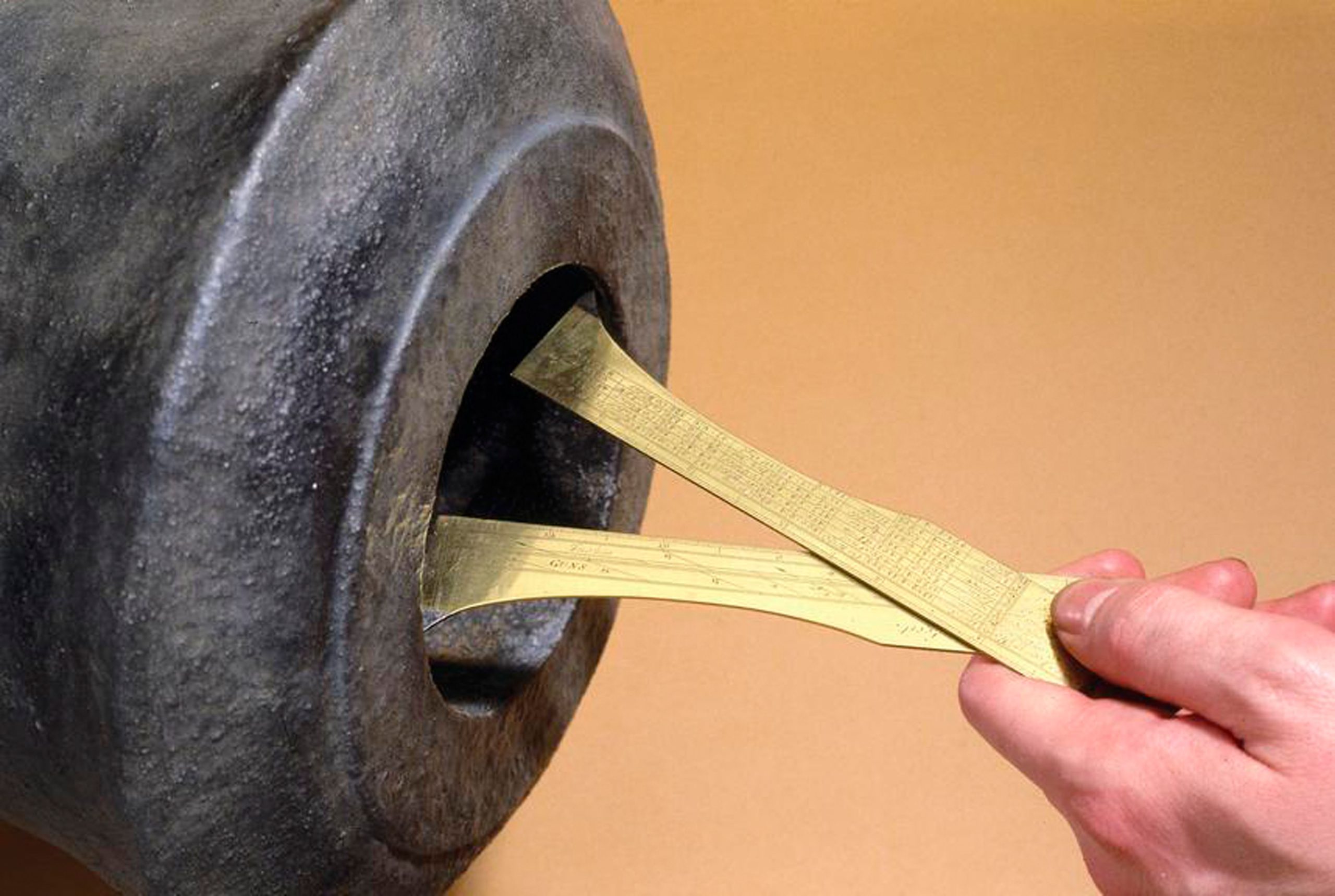
Measurement of a cannon’s bore diameter using an 18th century CE gunner’s caliper. Source: https://bit.ly/3lGDtcq. © The Board of Trustees of the Science Museum.
This week’s #MaritimeMonday presents the Gunner’s Rule from the galleon San Diego, a Manila galleon that sank off Fortune Island in Batangas on December 14, 1600 after a naval engagement with the Dutch ship Mauritius. The shipwreck was excavated between 1992 and 1993 by Franck Goddio’s World Wide First Inc. (WWF) in collaboration with the underwater archaeologists of the #NationalMuseumPH. To learn more about the vessel’s story, please read here: https://tinyurl.com/SagaOfTheSanDiego.
Also known as a caliber compass or compas de medir balas, a gunner’s rule is a type of caliper engraved with precise information about each caliber, specifically designed for measuring cannonballs. The weight of the shot and charges, as well as other information including ranges, were also inscribed on the instrument. Calipers, also known as compass d’epaisseur or calibrador, are precision tools used to measure dimensions of materials such as time fuses, fuse plugs, diameter of shots, and calibers of cannons. Calipers are used to ensure precise measurements of moldings to avoid dimensional errors in the casting of artillery projectiles. During wars, artillery officers and or gunners were also equipped with compasses and calipers for effective artillery fire to maximize the chances of hitting their targets.
The gunner’s rule or caliper recovered from the San Diego shipwreck measures about 22.6 cm in length. It has two straight legs or jaws pivoted to each other at the top. Towards the end of each leg are probable adjusting knobs used to attach two sharp points. Another apparent relevance of this instrument would be as a compass used to measure distances on a map.
Your #NationalMuseumPH is now open to the public with minimum health protocols. Please visit our newly upgraded ‘300 Years of Maritime Trade in the Philippines’ exhibition on the second floor of the National Museum of Anthropology building. You may also opt to watch the virtual tour of the said gallery here: https://tinyurl.com/300YearsOfMaritimeTradePH. Please monitor this website and social media pages such as Facebook, Twitter, and Instagram for further information and booking arrangements.
#GunnersRule
#Compass
#SanDiegoShipwreck
#MuseumFromHome
#StaySafeStayHome
#BeatCOVID19
Poster and text by the Maritime and Underwater Cultural Heritage Division
© National Museum of the Philippines (2021)





